– Hello, I’m Mike Titelbaum, chair of the philosophy department here at the University of Wisconsin-Madison. It’s my pleasure to welcome you to this year’s installment of our UW Philosophers at Work series. I have the added pleasure of thanking Tom Zinnen and our co-sponsor for tonight’s talk, Wednesday Nite @ the Lab. I also want to acknowledge the Charles Manthey Winter Special Philosophical Events Fund for funding this event. And thanks to Rita Richter in the philosophy department for organizing, and to PBS Wisconsin for making the broadcast happen. Our speaker tonight is Paul Kelleher. He is associate professor of bioethics and philosophy at UW-Madison. His teaching and research focus on ethical and philosophical issues concerning public policy, especially health policy and climate change policy. He has published scholarly work on the foundations of justice in healthcare, the moral evaluation of inequalities in health outcomes, the ethics of rationing healthcare, the role of paternalism in the practice of public health, philosophical issues in health economics, and clinical ethics issues such as conscientious refusal by health professionals in the treatment of severely disabled newborns. Most recently, he’s just written a book on philosophical issues and climate change economics.
More to the point for tonight’s presentation, Professor Kelleher serves on the ethics committee at University Hospital here in Madison and is the chair of the advisory committee for University Health Services, the student health center here at UW. In 2018, he was elected a fellow of the Hastings Center, the nation’s oldest bioethics institute. Since the start of the COVID-19 pandemic, Professor Kelleher has served on two state-level committees concerned with the allocation of scarce medical resources. He’ll tell you the details of these committees during his presentation. He’s also served as a rapid response, on the rapid response ethics committee at University Hospital. Given his scholarly expertise and his real-time engagement with policy issues that affect all of us these days, I can think of no one better to speak to us about the ethics of vaccine allocation. Please join me in welcoming Professor Kelleher.
– Thank you very much for that introduction. Since the COVID-19 pandemic began, I’ve served on several coronavirus-related health resource allocation committees. For example, I’m a member of the rapid response ethics committee at the University Hospital in Madison, which provides guidance on the allocation of scarce critical care resources such as ventilators, ICU beds, and other therapies.
And I’ve served on a state-level committee that wrote allocation guidelines for scarce COVID-19 therapeutics, such as the monoclonal antibody treatment given to President Trump during his COVID-19 infection. And today I’m gonna talk about the ethics of vaccine allocation. I have three goals. First, I want to explain where explicit thinking about ethics and ethical principles has shaped the actual vaccine allocation process that’s now unfolding across the state and indeed, across the country. Second, I wanna demonstrate what it looks like to engage in substantive analysis of ethical claims. And finally, I wanna give you a sense of how Wisconsin is doing in this challenging, unprecedented, and ongoing vaccine allocation effort. I’ll share these impressions not only as a bioethics scholar and a concerned citizen, but also as a former member of the state-level committee that was tasked last year to write the ethics principles to guide this entire enterprise. Of course, I’m just one among many members of that committee, and like everyone else, I can’t and I don’t claim to be perfect in lacking bias of one kind or another. And in having properly weighed all of the ethical principles and values that I’ll be talking about. But I’ve done my best to evaluate the situation impartially, and my main aim is to put some ideas and arguments forward in the public sphere for others to discuss, criticize, modify, and maybe even accept.
So let’s start in late summer of 2020. At some point in August, staff at the Wisconsin Department of Health Services or DHS began to put together an ethics subcommittee of the State Disaster Medical Advisory Committee or SDMAC. SDMAC is a standing committee of 12 members that advises DHS leadership regarding medical ethics during a declared disaster or public health emergency. The SDMAC ethics subcommittee that was convened in late 2020 had the charge of drafting a document that outlined ethical principles that should guide the state-level allocation of scarce COVID-19 vaccine and therapeutics. And I served on this ethics subcommittee along with 15 other Wisconsinites from a diverse array of backgrounds. We had representation from community health centers and tribal health systems, the disability rights community, AARP Wisconsin, clinical and public health ethics, and several health and social service and advocacy organizations that serve many different communities across the state. The plan was for the SDMAC ethics subcommittee to draft ethics principles and other high-level ethics guidance that would then be released for public comment and then finalized by the committee. And then if approved by the larger, standing SDMAC subcommittee, be passed along to other committees that were going to be responsible for writing concrete recommendations for vaccine allocation and for therapeutic allocation. DHS would then make its own decision whether to accept, reject, or modify these subcommittee’s recommendations before implementing an official allocation policy of the sort that we see now. What I wanna do in this talk is to explain both the process and some of the ideas that underlie the allocation framework and the vaccine eligibility criteria that now prevail across the state.
So let’s begin with the SDMAC ethics subcommittee. While COVID-19 trends in August 2020 had improved from the prior spring, it was clear to all of us on the ethics subcommittee that we were by no means out of the woods, and that any return to normal would require widespread vaccination. And of course, vaccination not only provides the community benefit of lower disease prevalence in general and affords individual benefits to those who are undergoing vaccination. This is a personal health benefit that comes in addition to whatever benefit that we get at the community level. So our committee had to consider both the ethics of pandemic mitigation at the community level as well as the ethics of equitable resource allocation to individuals, each of whom may want vaccination and who may carry a different degree of personal risk of contracting COVID-19 or of severe illness or even death of course, if infected. Because the ethics subcommittee included members who don’t normally engage systematically with medical and public health ethics in their day-to-day activities, and because we were in the midst of an ongoing pandemic that created real urgency for us, the ethics subcommittee wanted to get started without having to reinvent the wheel, so to speak. So we were asked by the subcommittee co-chairs to review previously-issued ethics documents. And one of these was a document produced in 2008 by an ethics panel in collaboration with Wisconsin Hospital Association and the Wisconsin Division of Public Health. Now, as with virtually every ethics framework that I’ve seen for guiding resource allocation in the current pandemic, this earlier 2008 document helpfully distinguished between two sets of ethical values or ethical principles. On the one hand, there are the ethical values that bear on what makes for socially responsible allocation.
Call these the substantive ethical values, since they bear on the substance of the issue at hand. Second, the 2008 document also stressed the importance of what it called procedural values. So think of these as values that all public decisions of immense consequence should respect and embody. Examples of these include the value of being based on well-established scientific evidence, the need for public decision making to be carried out in a transparent, open, and inclusive manner. In a manner that doesn’t exclude or silence, but is affirmatively responsive to the concerns and inputs of the wide diversity of Wisconsin residents. These and potentially still other procedural values are obviously extremely important. And the state ethics subcommittee that I served on drafted its own similar list, but in the interest of time, I’m gonna focus in this talk on the other so-called substantive values and principles, as they’re the ones that purport to speak directly to how different groups should be ranked for prioritization when the task is allocating scarce healthcare resources such as scarce doses of vaccine. So now consider this substantive ethical principle that comes from that earlier 2008 document. This is a principle that says, that speaks to fairness. It says, “This value requires that healthcare resources “be allocated fairly, with special concern “that the most vulnerable are treated fairly.
“However, given the fact that there will be limited resources, “the fair distribution of resources is governed “not by what is best for the individual, “but rather by the principle “of the greater good of the community. ” So that was the principle from that 2008 document. Notice the “however” in the middle of the principle. This “however” suggests that there is or at least can be a conflict between treating people fairly on the one hand and on the other hand, promoting what this document calls the greater good of the community. And indeed, that’s a very common distinction in ethics as an academic discipline. Sometimes it’s possible to promote health or well-being a great deal, but to do so would require neglecting the needs of those who are worst off. Now, here’s a philosopher’s thought example to make the point. Suppose that for whatever reason you found yourself in the unfortunate position of having to choose which of two groups to help, and you can’t help both of them. So suppose, for example, that group A contains just two people, both of whom are very ill and who will die without your assistance. And that if you choose to help them, you could prevent both of them from dying.
Or, and this is option two, you could choose not to help group A and instead you could help group B. Now imagine that group B is such that no one in the group faces any risk of dying, but that if you don’t help group B, all 10,000 members of the group will lose their sight for the rest of their lives. Now obviously, this is a very academic philosopher’s thought experiment. It tells you very little backstory, and it asks you to imagine that no other ethically-relevant factor distinguishes one group from the other. But the example is intended to illustrate a conflict, at least at the conceptual and theoretical level, between helping the worst off on the one hand and doing the most good on the other. It’s a choice between helping those who will be worse off if not helped, these were the two people in group A, but in helping the group that is so large that you could do more overall good if you help them, even if no individual in that group faces anything nearly as bad as death. So anyway, I hope that you can see what it might look like for there to be a tension between aiding the worst off on the one hand and producing the most overall aggregate benefit on the other. But now notice if there is such a possible tension, then really that proposed principle of fairness that we just talked about in the 2008 document really could be broken down into two different principles. First, you could have a principle of fairness, which concerns perhaps showing special concern for those who are worse off or who will be worse off if not helped. And second, a principle that we might call the greater good principle, which articulates the ethical importance of policies that produce as much health and well-being as possible in a community.
So here you have an example of just the sort of conceptual slicing and dicing that academic philosophers like me are kind of obsessed with. So now, that fairness principle from the 2008 document is just one principle from one framework that the Wisconsin COVID-19 ethics subcommittee considered when we were doing our work. We were also very fortunate to have as a second example, a report that was written and released in the fall of 2020, just as we were doing our work, by the National Academies of Sciences, Engineering, and Medicine. The National Academies is a collection of experts in fields relevant to public policy, and it’s often tapped by Congress and federal agencies to study and to make recommendations regarding matters of pressing public importance. And that report, the National Academies report, was a major event. It was always clear that the federal government and the 50 states would look to the National Academies’ framework as they themselves grappled with these allocation issues. And that’s exactly how our ethics subcommittee at the state level used that report too. So what did the National Academies say? Well, in addition to articulating its own set of procedural principles and values, it put forward three substantive ethical principles to guide vaccine allocation. These were a principle of maximum benefit, a principle of equal concern, and a principle of mitigation of health inequities. Now the maximum benefit principle is pretty similar to the greater good of the community principle that we considered just a moment ago.
But the National Academies stressed that in considering the extent to which an allocation strategy creates benefits, policy makers should focus not only on health benefits, like the prevention of illness and death, but also on socioeconomic well-being, the sort of thing afforded by in-person education and reduced unemployment. Now, under the heading of equal concern, the National Academies stressed that no one person is intrinsically more valuable or worthy of consideration than any other person. And that equitable vaccine allocation mustn’t prioritize people purely on the basis of religion, race, ethnicity, national origin, disability, or age, but at the same time, the National Academies stressed that it’s absolutely possible to show equal concern and equal respect while also prioritizing some groups over others for the purposes of phased vaccine allocation. To take an example that hits very close to home, it doesn’t show me less than equal concern or less than equal respect to put me at the very back of the vaccine allocation line, given that I am a healthy university professor who can fulfill my essential job duties safely from my home. When vaccine doses are scarce, the aim of any allocation framework must be to prioritize some over others on the basis of principled moral reasons rather than on the basis of reasons that in fact offend against the equal moral status of any individual. So the National Academies’ final substantive ethical principle was one of mitigation of health inequities. And health equity is defined in different ways by different people. The National Academies adopted a definition on which health inequities are quote, “Systematic differences “in the health status of different population groups “which have significant social and economic costs “both to individuals and to societies,” end quote. A paradigmatic example of a health inequity is the difference in life expectancy between white Wisconsinites and Black Wisconsinites. According to the most recent data available on the state’s website, white Wisconsinites on average live six years longer than Black Wisconsinites.
And according to a recent report by the Pulitzer Prize-winning, nonpartisan news organization ProPublica, the white/Black life expectancy gap is a staggering 14 years inside the city of Milwaukee. Now, health inequities just like this reflect systematic differences in opportunities to live a full, healthy life, and the National Academies maintained that these differences in opportunities and outcomes are rooted in structural inequalities, racism, and residential segregation, in that to quote them, “Any vaccine allocation scheme designed to reduce COVID-19 “must explicitly address the higher burden of COVID-19 “experienced by the populations affected most heavily, “given their exposure “and their compounding health inequalities. ” Here, for example, are two diagrams produced by the award-winning American Public Media Research Lab that illustrate the sort of health inequities that the National Academies group was referencing. This diagram shows the comparatively higher risks of dying from COVID-19 faced by people of color across the entire country. For example, when adjusted for age, Latinos are 2. 4 times more likely to have died than white Americans, while Black Americans are twice as likely. Now, the second diagram displays Wisconsin-specific data. This shows for instance, that when adjusted for age, the Native American population in Wisconsin has seen 309 COVID-19 deaths per 100,000 residents, compared to 105 deaths per 100,000 white residents. Such are the health inequities that the National Academies emphasized must be explicitly addressed in the vaccine allocation. So those were the National Academies’ three substantive ethical principles.
Maximum benefit, equal concern, and the mitigation of health inequities. And in the end, this set of principles was very similar to the principles that our Wisconsin ethics subcommittee recommended to the state. There were some differences, but in my opinion, they’re mainly differences in presentation and not significant differences in substance. For example, instead of maximizing benefit, the Wisconsin subcommittee stressed the importance of promoting the overall common good, as well as the requirement that every resident be treated with equal respect and dignity. And we also put forward a principle calling for attention to and mitigation of preexisting health inequities. We called in particular for the state and for vaccinators to attend to individuals and groups risks by accounting for what we called the compounding multiple risk factors associated with COVID-19. And finally, like most other major ethical frameworks released in the fall, our Wisconsin ethics subcommittee articulated a list of procedural considerations that stress the importance of transparency, trustworthy. . . being trustworthy, and inclusivity.
Now as I’ve said, the Wisconsin ethics subcommittee that I served on was tasked with drafting ethics principles and general guidance. And we were not tasked with proposing concrete vaccine allocation phases of the sort that are now being implemented. But the National Academies did propose phases, and let me show you what their proposal looked like. You can see that the National Academies’ proposed Phase 1 includes several groups who are at high risk of COVID-19 exposure and/or severe illness if infected. The National Academies’ Phase 1a, which are called the jumpstart phase, focused on high-risk healthcare personnel and first responders, two populations that were essential for the ongoing COVID-19 response in all states. And after that, the main focus was on individuals whose absolute risk of dying was deemed the highest. For example, people with high-risk medical conditions and adults residing in congregate living settings, especially older adults. Now I’ll show you some data on those populations in a moment. For now, just notice that in its Phases 1 and 2, the National Academies group appears to have prioritized populations on the basis of their elevated COVID-19 risks, or in some cases, on their role in maintaining social functioning. You can see, for example, that older adults not included in Phase 1 is listed last among the National Academies’ Phase 2 priority groups.
Compare that to some States such as Maine, where I’m from and where my family still lives, that’s been using an exclusively age-based approach to vaccine allocation. By contrast, the National Academies understood that while risk of hospitalization and death worsen with age, other non-age risk factors can be equally, if not more concerning. And they must also be considered for prioritization. I’ll return to this point in just a moment. So take a look now at the brown oval beneath the National Academies’ proposed phases. The National Academies proposed to respond to health inequities by treating equity as a so-called crosscutting consideration. Specifically, it proposed that in each group singled out for prioritization in each of the phases, vaccine access should be prioritized for geographic areas based on the CDC Social Vulnerability Index, which is an index that was developed for local preparedness in public health emergencies, exactly of the sort that we’re in right now. The index identifies geographic areas of vulnerability based on 15 census variables, which reflect many of the recognized social determinants of health. In general, the National Academies propose that vaccine doses be allocated largely on the basis of individual risk, and then proposed that the Social Vulnerability Index be used to make it even finer-grained subprioritizations within those risks categorizations, within those risk groups. Now, while I think there’s much to commend this general approach to prioritization, I along with two other bioethics colleagues submitted a public comment to the National Academies, underscoring something we thought was very important.
We noted that many individuals at elevated risk for severe COVID 19 outcomes may lack access to the very healthcare that would lead to the very medical diagnoses of co-morbid and underlying conditions that the National Academies referred to in its Phase 1b proposal. After all, a central dimension of health inequity is the degree to which members of socially-marginalized groups have been historically disenfranchised from access to affordable healthcare services. To the extent that vaccine eligibility was going to be policed, that’s to say to the extent that individuals were going to be asked to prove whether or not they had hypertension or diabetes or asthma, then barriers to affordable health care could translate into barriers to much-needed protection against COVID-19 risks. As a way to mitigate these background inequities, my colleagues and I proposed a place-based approach. This is approach where priority would be given to geographic areas where social vulnerability is high and where vaccinating entities would engage in proactive outreach rather than in passive, internet-based scheduling for vaccination. Unfortunately, these suggestions were not ultimately incorporated into the final draft of the National Academies report. Now, as I’ve mentioned, our Wisconsin ethics subcommittee guidance was intended to inform the work of a separate, state-level vaccine subcommittee. That second subcommittee began its work around November 2020, and it issued its first official recommendations to the state in December. That timeline enabled the state vaccine subcommittee to respond to recommendations from the CDC, which were informed by the advisory committee on immunization practices or ACIP. That’s a group of medical and public health experts who develop recommendations on the use of vaccines in the United States, and they’ve recommended vaccine schedules for childhood immunizations, and now they were tasked with doing the same in this context.
Now I wanna turn to ACIP’s decision making in November and December of 2020 because I think it reveals important lessons both for the substantive ethics of vaccine allocation as well as for how meaningful ethical analysis, as well as well-meaning ethical analysis can misfire. Okay, so after uncontroversially prioritizing health care personnel and residents of long-term care facilities in Phase 1a, the ACIP turned its attention next to its other phases, which are called Phase 1b and 1c. At a meeting just before Thanksgiving in November 2020, ACIP staff presented key epidemiological background information along with three options for Phase 1b prioritization. So let me first show you some of the data that ACIP considered, and then we’ll examine how ACIP attempted to analyze the decision from the perspective of ethics. The three populations that ACIP considered for Phase 1b prioritization were non-healthcare essential workers, which was a large category that encompassed nearly 90 million people, adults aged 16 to 64 with high-risk medical conditions, and the third group was adults ages 65 and older. The task was to choose which of these groups would be vaccinated in Phase 1b and which would wait until Phase 1c. ACIP proposed to analyze this decision along three dimensions. These were the underlying clinical and epidemiological science, the feasibility of implementation, and ethics. Regarding the science, let me show you just two of the several slides that ACIP staff presented at the November 2020 meeting. This is a slide showing relative risks for COVID-19 associated hospitalization.
Take a look first at the right-hand side of the table. These are so-called adjusted relative risks, that is, they’ve been adjusted for age, sex, and race and ethnicity. Look first just below the red box. Here it’s reported that those 65 years and older face a bit more than two and a half times the risk of being hospitalized with COVID-19 as compared to the specific reference group of individuals ages 18 to 44. Now look inside the red box. This shows that individuals with one, two, and three medical conditions have two and a half, four and a half, and five times the risk of COVID-19 related hospitalization as compared to individuals with no underlying medical conditions. Finally, you can see on the right-hand side at the very bottom that individuals who are Black or who are members of other racial and ethnic minority groups face risks that are between three and four times higher than those faced by non-Hispanic white individuals. Each of these findings reported in this chart is certainly relevant to the question of which of these three groups ACIP should have prioritized in Phase 1b. I have no question about that. While older age is definitely a serious risk factor, so too as you can see is having certain pre-existing medical conditions or being a member of a racial or ethnic minority group.
Relevant too is that because of background differences in baseline life expectancy, the 65 and older group is disproportionately white, whereas racial and ethnic minorities make up a disproportionate share of those with high-risk medical conditions as well as those who are non-healthcare essential workers. Okay, here now is a second slide that was shown by ACIP staff at the November meeting. This slide compares the proportion of deaths that would be prevented over the six months following the implementation of Phase 1b, depending on which group was prioritized for 1b and which were prioritized for Phase 1c, and the diagram also reports on expected deaths averted in two different scenarios. First on the left is the scenario in which COVID-19 incidence is rising in the population, as it was expected to do in December following the Thanksgiving holiday. You can see on the right the scenario in which incidence is falling; that’s the modeling in that scenario. So let’s focus on the first scenario, the one where on the left, where incidence is rising. What ACIP’s modeling suggested is that though slightly more deaths would be averted if those 65 and older were prioritized in Phase 1b, almost as many deaths would be averted if either of the other two groups were prioritized instead. Meanwhile, prioritizing those 65 and older would not prevent as many COVID-19 infections as would prioritizing those with high-risk medical conditions or essential workers. So on the assumption that preventing overall deaths is important, but not necessarily the only important thing because infections that don’t result in death matter too, many people found it difficult to conclude, on the basis of this epidemiological modeling alone, which of the groups should be prioritized. And indeed, that was ACIP’s opinion as well.
They said that in their view, the quote “differences among three prioritization strategies were minimal,” end quote. So ACIP declared that the decision should turn on considerations of implementation or feasibility and then on ethics. Since the potential long-term effects of non-fatal COVID-19 infection are not insignificant and since, as we’ve already seen, a person’s individual risk of dying is strongly correlated with their medical history and with their race and ethnicity, ACIP staff believed that vaccine prioritization could not be determined on the basis of the epidemiological science alone. Now because my focus is on ethics, I’m gonna skip over ACIP’s discussion of implementation. In general, ACIP believed that overall, essential workers and those with high-risk medical conditions would be somewhat harder to reach than individuals aged 65 and older, and we’ll come back to that. So acknowledging that that’s a topic that I’m gonna skip over, here’s where things stood before the ACIP panel turned to consider ethics. On a straightforward reading of ACIP’s plus-based tally system, it seems that adults age 65 and older are slightly ahead, with the other two groups not far behind going into the consideration of ethics. So now let’s take a look at how the ACIP analyzed those ethics. Just like the National Academies, the ACIP adopted a principle of maximum benefit, a principle concerned with mitigating health inequities, but then it also also adopted a new principle, or at least a principle with a new name. It termed this principle the promote justice principle.
In a background white paper released around the same time in November in 2020, ACIP staff, or I think this was possibly CDC staff said that the promote justice principle was described, or could be described as quote, “intentionally ensuring that persons have equal opportunity “to be vaccinated, where this includes a commitment “to removing unfair, unjust, and avoidable barriers “to vaccination that disproportionately affect “those that have been economically “or socially marginalized,” end quote. With that in mind, let’s take a look at the ACIP’s key ethics slide. This slide purports to compare the three populations under consideration with respect to each of the ACIP’s three ethics principles. At the November meeting where this was discussed, the ACIP presenter noted that a darker green color indicates stronger support for that ethical principle. For example, in looking at the first row of the table, ACIP is saying that vaccinating essential workers and adults 65 and older does better when it comes to maximizing benefits and minimizing harms than does vaccinating adults with high-risk medical conditions. Curiously though, neither the ACIP nor the background white paper that it cited gave any explanation for why a lighter green shade was given to the option of vaccinating those with high-risk medical conditions. And after all, we’ve already seen that the epidemiological modeling that the ACIP considered showed that prioritizing adults with high-risk medical conditions would avert both more infections and more deaths in the six months following vaccination than would vaccinating essential workers instead. Take a look now at the second row of the table. Here, ACIP reports that in their judgment, prioritizing essential workers does better with respect to promoting justice than would prioritizing those with high-risk medical conditions or older adults. But once again, ACIP didn’t explain why it drew this conclusion.
And recall that the ACIP’s ethics principle concerned with promoting justice says that all persons should have equal opportunity to be vaccinated and that there should be a commitment to removing unfair, unjust, and avoidable barriers to vaccination. Barriers that disproportionately affect groups that have been economically or socially marginalized in the past. And if you look at the very middle box, you’ll see that ACIP seems to warn that if those with high-risk medical conditions are from disadvantaged backgrounds, from socially marginalized backgrounds, then they will require focused outreach. As they put it, focused outreach to those with limited or no access to health care. That, if you recall, was precisely the point that I and my bioethics colleagues stressed in that comment that we submitted to the National Academies. But here’s a question: why should this fact, which warns about a need created by a historical and systemic inequity, translate into a lower score for a group that disproportionately faces that very inequity. The ACIP never explained this, and I admit that I’m still pretty mystified by it. Now look at the final row of the ACIP’s ethics table. You’ll see that ACIP thinks that prioritizing essential workers does much better with respect to mitigating health inequities. And here too, they cited more or less the same phenomenon that I and my colleagues had flagged earlier.
Namely, that historical and inequitable barriers to healthcare access can prevent those who are burdened by health inequities from receiving diagnoses of high-risk medical conditions in the first place. ACIP also noted that the group of individuals aged 65 and older is whiter than the United States population, something that I’ve already mentioned. And this to them suggested that if those 65 and older were prioritized, it would unfairly restrict access to vaccination among people of color. Now, as I mentioned, each of these observations is accurate, but the question is this: given how issues of equity intersect with all three of these population groups, do these observations that the ACIP flagged, do they justify giving such different scores to the three groups on the ethical principle of mitigating health inequities? The ACIP never really gave a satisfactory rationale for where they came down on that. The AC. . . Y’know, clearly they thought that their considerations did justify that, but it didn’t present an argument in favor of the conclusion. Instead, it simply translated the judgments it expressed with its shades of green into its plus-based tally system like this. Now at the time, many commentators chose to focus on the ethics scores that ACIP gave to the groups of older adults.
That is, the scores that are listed in the rightmost column. By contrast, I’ve just raised some questions about the scores given to adults with high-risk medical conditions. That’s the group listed in the middle column. Not only do I myself not understand why this population didn’t receive three pluses along the dimension of maximizing benefits or why it received just two pluses for promoting justice, but if the way that justice were promoted in this population was to use proactive outreach to those communities who are most likely to be burdened by multiple high-risk medical conditions, then I don’t see why the high-risk adults option should also be scored so low along the dimension concerned with health equity. After all, the National Academies already flagged the CDC’s Social Vulnerability Index and that it was a tool that could be used to address precisely the barriers to access that led ACIP to give just a single plus to the option of vaccinating those with high-risk conditions. Nevertheless, here in the bottom row is how the ACIP summarized its overall ethics discussion. And from the table as a whole, you can see why ACIP ended up prioritizing essential workers in its November recommendations, even though adults aged 65 and older seem to be in the lead, so to speak, before going into the discussion of ethics. You can see that if adults 65 and older had gotten just one more plus on ethics, or if ACIP had better appreciated the equity-based merits of proactive outreach and vaccination of individuals who live in areas of high social vulnerability who are comparatively more likely to have high-risk medical conditions, then at least one of these other groups may well have been tied with the essential workers group. Now I wanna make it clear that I’m not stressing this because I’m somehow against vaccinating essential workers. Of course I’m for vaccinating anyone and everyone who chooses vaccination for themselves.
I simply want to emphasize two things. First, it’s not as easy as it might look to shoehorn a subtle, complex ethical analysis into a simplified plus system, as the ACIP sought to do. And second, I wanna highlight that the ACIP’s choice to downgrade the option of vaccinating individuals with the highest-risk conditions seems to have added a further disadvantage on top of the preexisting disadvantages that leads so many of those individuals to be at greater risk to begin with. The ACIP was absolutely correct to highlight the fact that high-risk individuals in high social vulnerability areas will require focused outreach for vaccination. But that should be acknowledged and navigated as an unjust barrier to access. It definitely should not be cited as a reason for the conclusion that it’s less ethical or less ethically compelling to vaccinate adults with high-risk medical conditions than it is to vaccinate the entire category of essential workers, some of whom, many of whom are young and at comparatively lower risk of severe outcomes of COVID-19 infection. Of course, there are individuals who have high risks in the essential worker population, and basically what I’m saying is that the three categories that the ACIP worked with may not have been the best three categories to treat as exclusive comparators. Ultimately, ACIP’s November recommendation was to suggest that essential workers should be prioritized under Phase B, and that Phase 1c should include all adults aged 65 and over and that it should also include all individuals 16 to 64 who have high-risk medical conditions. Prior to the vote on this proposal, many voting ACIP members cited considerations of equity as the main reason to prioritize essential workers, and I’ve tried to raise some questions about that line of thinking here. Nevertheless and in the end, that was not ACIP’s final 1b and 1c recommendation.
The November vote was just a preliminary vote, and the final vote was to come in mid December. And in that vote, the ACIP radically changed course. It recommended that Phase 1b comprise frontline essential workers and persons 75 and older. Gone too was any reference to the plus system and really any concrete rationale for the major change from November to December. Accordingly, there was no affirmative reason given for why it was equitable to delay vaccination among those with high-risk health conditions who live in high social vulnerability areas. It was left up as a question mark. With all that said, the category of frontline essential workers does include many people who face enormously high COVID-19 risks. Key among them are individuals who work in meatpacking plants within the food and agriculture sector. This is a sector and industry that’s seen ongoing and severe outbreaks of COVID-19 all the way through the pandemic. And those who are employed in the sector live in areas of the country that rank comparatively high on the social vulnerability index.
So that is a key demographic that creates overlap between very high-risk individuals and essential workers. But notice that this sector could have been the focus of an explicitly place-based approach to vaccine allocation, rather than an approach that combined an age-based criterion with a still very wide, employment classification-based criterion. Now, ACIP’s final 1b recommendation was accepted by the CDC director in late December 2020. And around that same time, the Wisconsin state vaccine subcommittee took up the issue of what the state’s 1b priorities should look like. After several weeks of deliberation, many of which I watched in early morning Zoom sessions, the state committee proposed the following groups be included in Phase 1b: those 70 years and over, Wisconsinites who are the recipients of IRIS and Family Care, a group that includes frail elders and adults with physical and intellectual disabilities, individuals who reside in congregate living settings, for example homeless shelters, jails, prisons, mental health institutes, and various public-facing and frontline essential workers, including non-EMS first responders, educators, and non-frontline but essential healthcare personnel. As you can see, many of these state-level recommendations departed from ACIP’s December recommendations. The Wisconsin subcommittee was in my view, much more sophisticated in its deliberations on how to craft vaccine allocation priority schemes that harmonize the two ethical principles that virtually all ethical frameworks included: a principle concerned with promoting benefits or maximizing benefits, and a principal concerned to mitigate health inequities. Especially important for these two principles is the committee’s focus on congregate living settings, where individuals who disproportionately hail from high social vulnerability index areas are brought together and where COVID-19 transmission is comparatively high and relatively more difficult to keep in check. At the same time the Wisconsin subcommittee was finalizing its 1b recommendations, President Trump’s outgoing Department of Health and Human Services Secretary called for every state to broaden its vaccine eligibility to everyone 65 and over and everyone who had at least one high-risk medical condition. And very soon after that, Wisconsin adopted the vaccine subcommittee’s 1b recommendations with two key changes.
That age-based eligibility would be lowered from 70 to 65, in line with what the Trump administration had asked of states, and that educators and childcare professionals would be given priority among those who would be eligible in Phase 1b. Now, I wanna make it clear that I’m glad for all of those, I’m ecstatic for all those who have been vaccinated under 1b or who maybe even have an appointment in the future, near future I hope. But I also feel an obligation to flag the important trade-offs, the important ethical trade-offs that are embodied in the approach that Wisconsin ultimately adopted for Phase 1b. These are trade-offs that were starkly underscored by a statement from a DHS official that was quoted in a news story on March 10th. This is a story that announced that the state was beginning to consider who would be eligible in a future Phase 1c. The official explained that the state was trying quote, “to include in Phase 1c the people who we know are at risk, “to think about how do we do this in a way “that doesn’t overwhelm the vaccinating system,” end quote. In light of this concern to avoid overwhelming the vaccine allocation system, I think it’s immensely important to stress that the decision that was made in January, the decision to make everyone over the age of 65 eligible for vaccination then in January, that was a decision that meant that many individuals who face the very highest risk of adverse effects and who may also live in areas ranking high on social vulnerability would have to wait all the way until March 22nd, when they will finally become eligible for COVID-19 vaccination under the state’s Phase 1c criteria. I also wanna stress that this is not true of all high-risk individuals. I’ve already mentioned that those who reside in congregate living settings, as well as those with intellectual disabilities who are on certain, receive benefits from certain state programs, they are already covered under 1b. People with Down syndrome, for example, have been especially hard hit by this pandemic.
A large study in the United Kingdom found that, if infected, people with Down syndrome are five times more likely to be hospitalized and 10 times more likely to die than the general population. And I think it’s a real credit to the state of Wisconsin that many of its residents with Down syndrome have been eligible for vaccination under 1b. I think another bright spot from the point of view of marrying the ethical principle of maximizing benefits with mitigating health inequities is the state’s policy, which was adopted in January of filling all vaccine doses that are requested across the state by community health centers, free clinics, and tribal councils. And because Native American tribes are sovereign nations, they can formulate their own eligibility rules. And so they’ve been able since January to vaccinate everyone in their communities that they deem have the highest risk. And I think that the state deserves enormous credit for adopting this policy of filling all of these requests from these communities. It’s a policy that empowers many underserved and marginalized communities across the state. I’ve been mostly talking about vaccine eligibility rules, although at that time stressed the importance from an equity perspective of proactive outreach and place-based vaccination efforts. And I’m encouraged to see mobile vaccination units setting up clinics in, for example, churches on the north side of Milwaukee. The first of these took place in early March, as best as I can tell, and that’s precisely when West Virginia, a state that has been a national leader in proactive outreach, was doing the same.
West Virginia’s been using the one-shot Johnson and Johnson vaccine in these efforts, and while I don’t know which vaccine is being used in similar contexts here in Wisconsin, there’s every reason to provide a one-and-done option to those who live in areas of high social vulnerability, where residents face many constraints, including constraints on their ability to take time away from work to receive a second vaccine dose or time away from caregiving to get through feeling a little crummy for example, as is not uncommon after the second dose of the Pfizer or Moderna vaccines. And speaking of the CDC Social Vulnerability Index, it was announced on March 16th, just the day before I’m recording this talk, that as of March 22nd, all residents, all residents who are 18 or older in 10 zip codes in Milwaukee will be eligible for vaccination. These are zip codes that score extremely high on the CDC Social Vulnerability Index and that have borne a disproportionate share of the state’s overall COVID-19 death toll. I hope that these expanded eligibility criteria will be combined with focused, proactive outreach to make vaccination easy and accessible to this newly eligible population. For example, they should take a page out of the playbook of that north side church I just mentioned. In that case, the city of Milwaukee helped church staff, and together, they sent out robocalls to parishioners and even reached out directly to some of them to encourage them to come in to be vaccinated, to tell them that that was an option for them. That sort of approach, one that doesn’t require people to have routine access to the internet, it really ought to be the rule, not the exception, and I hope to see more of it. I’ve heard some ethicists say, regarding vaccine eligibility, that the question isn’t who gets vaccinated, but when. Everyone will get a vaccine in due time, they say, and that certainly will be true of most of us, but it may not be true of all of us. And it’s more likely to be false for those who face the highest risks.
Some of them will have died before they can be fully vaccinated. And I hope that I’ve given some indication of what ethics, as a serious professional enterprise, can contribute to these important life and death conversations. I certainly don’t have all the answers, and I know very well that a one-way monologue like this is not the ideal way to converse with one’s fellow Wisconsinites, but I’m very grateful to have had this time to share my thoughts. And I want to invite you very sincerely to reach out to me via email whenever you’d like, if you’d like to consider continuing the conversation. Thank you very much, and please be well.
Search University Place Episodes
Related Stories from PBS Wisconsin's Blog

Donate to sign up. Activate and sign in to Passport. It's that easy to help PBS Wisconsin serve your community through media that educates, inspires, and entertains.
Make your membership gift today
Only for new users: Activate Passport using your code or email address
Already a member?
Look up my account
Need some help? Go to FAQ or visit PBS Passport Help
Need help accessing PBS Wisconsin anywhere?

Online Access | Platform & Device Access | Cable or Satellite Access | Over-The-Air Access
Visit Access Guide
Need help accessing PBS Wisconsin anywhere?

Visit Our
Live TV Access Guide
Online AccessPlatform & Device Access
Cable or Satellite Access
Over-The-Air Access
Visit Access Guide
 Passport
Passport

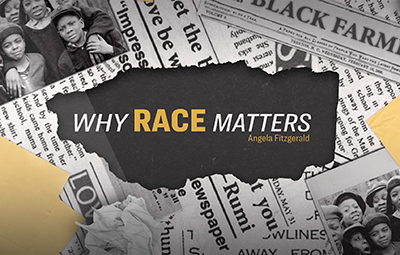





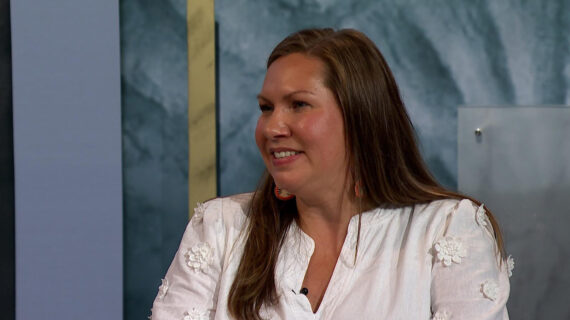
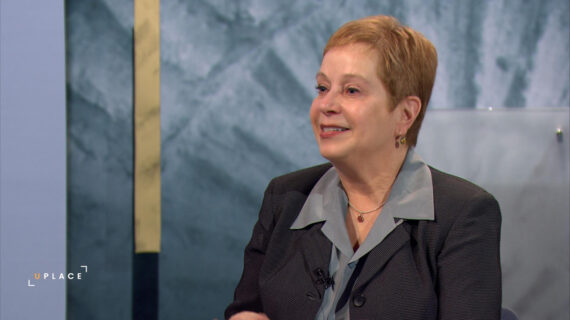

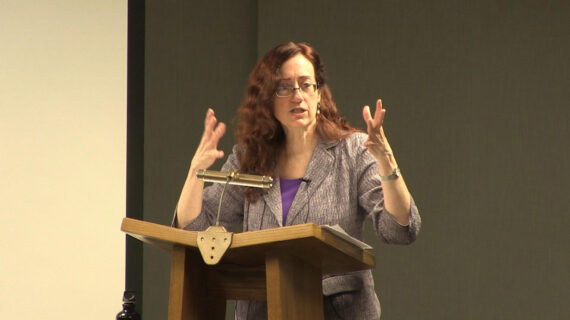
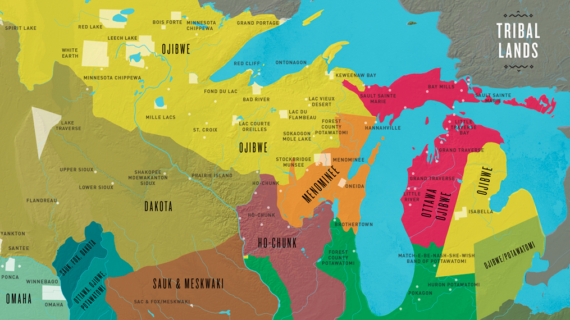






Follow Us